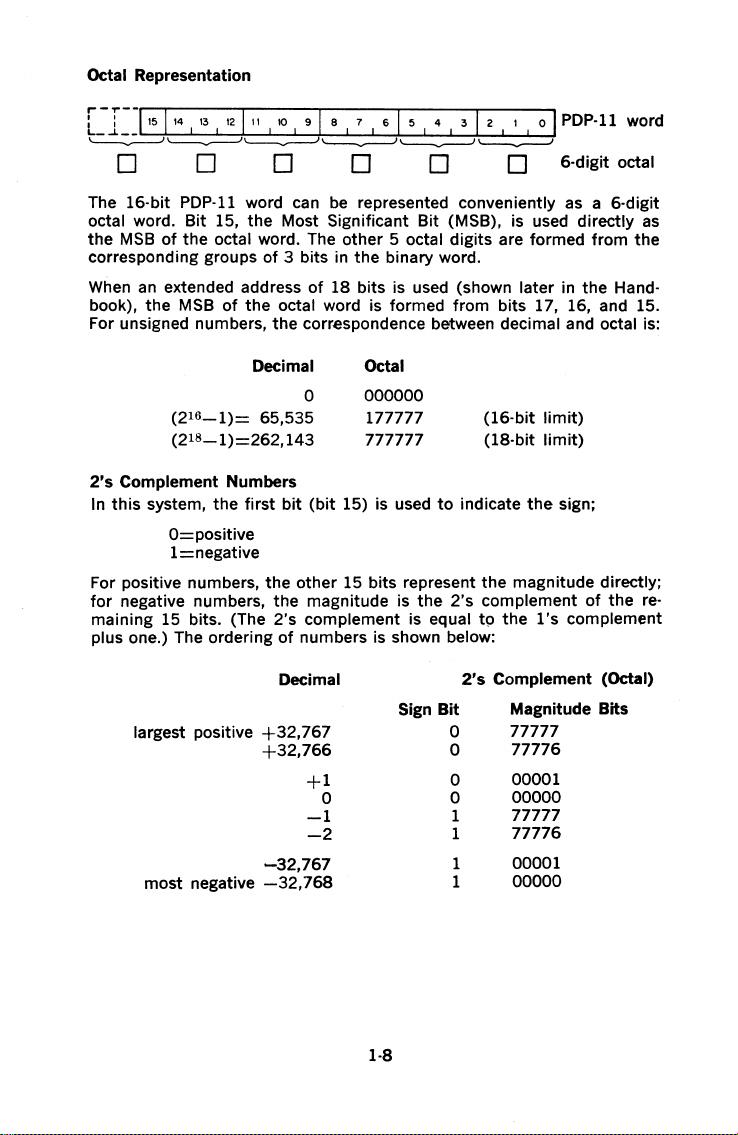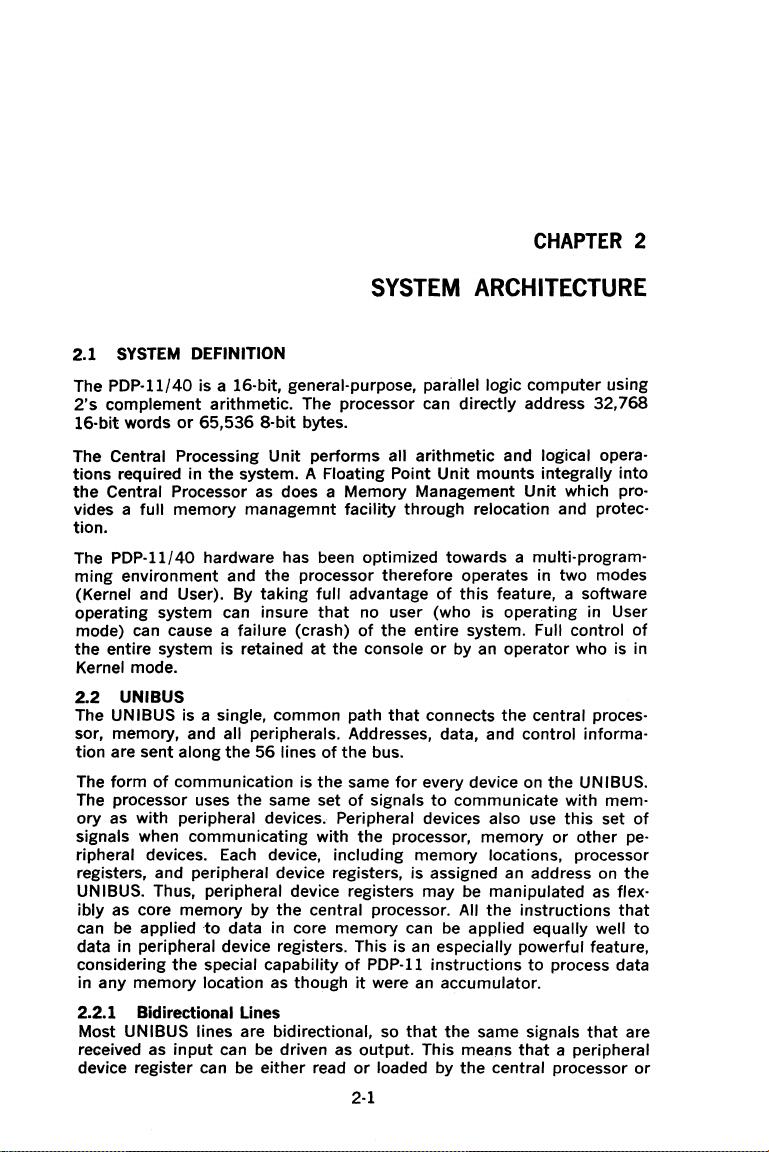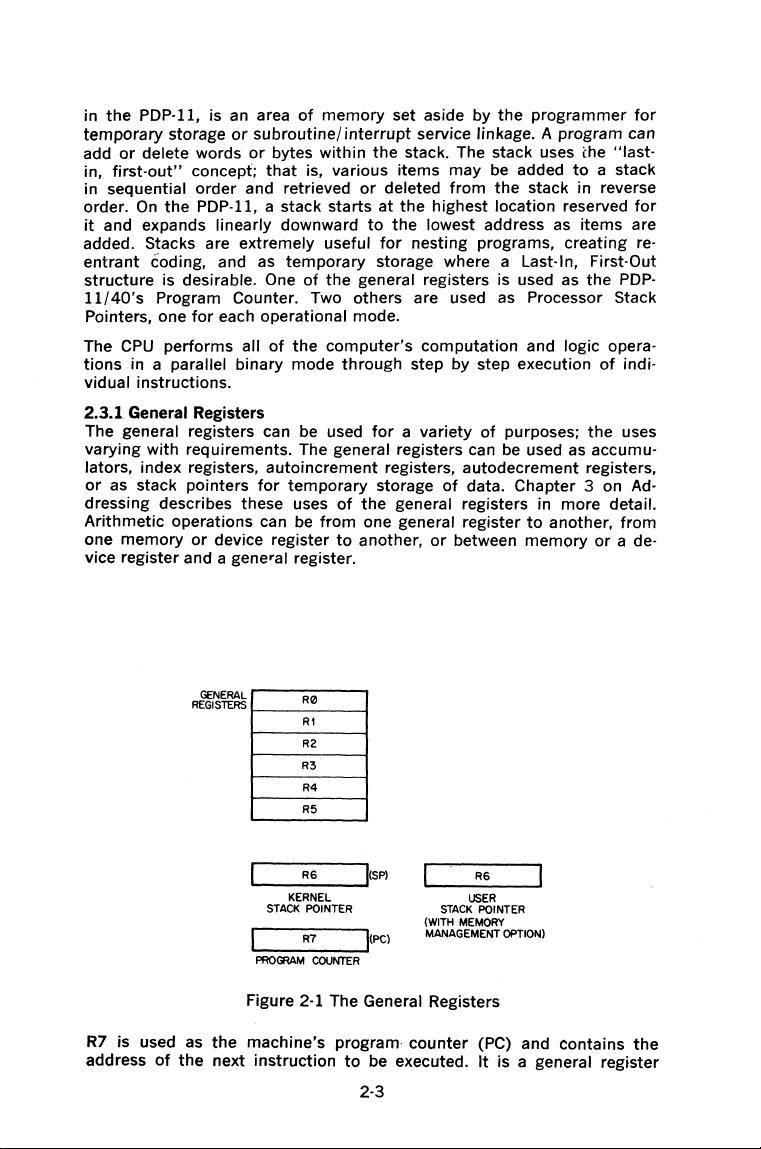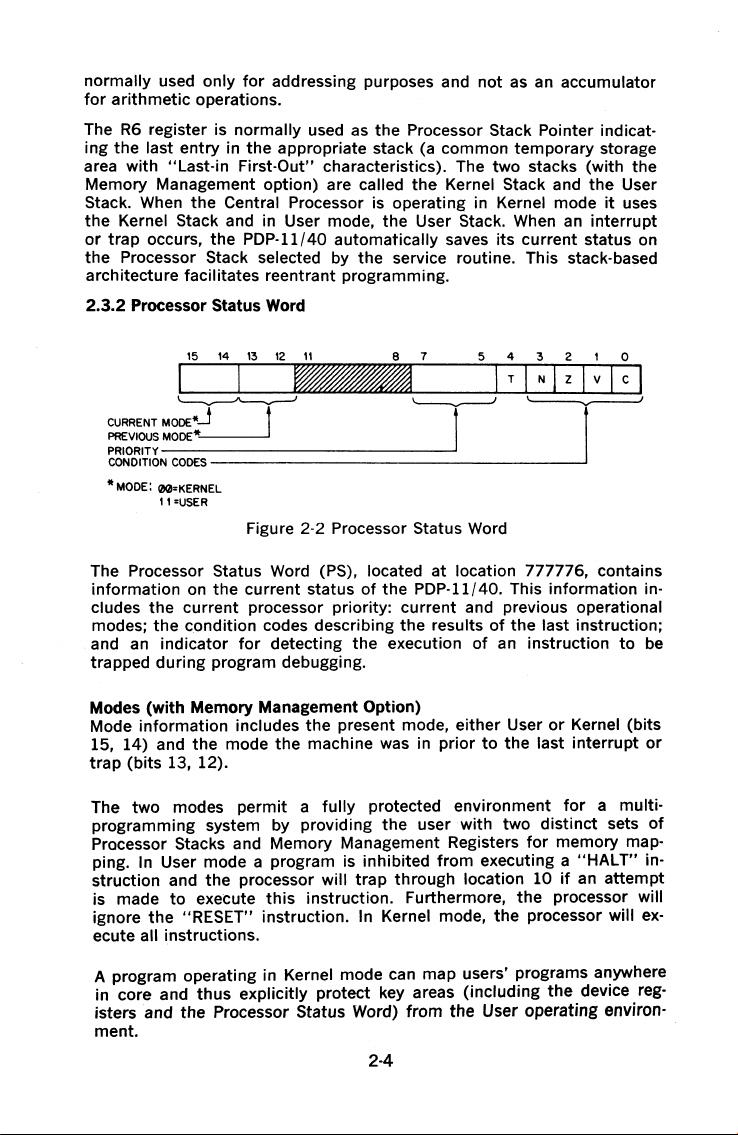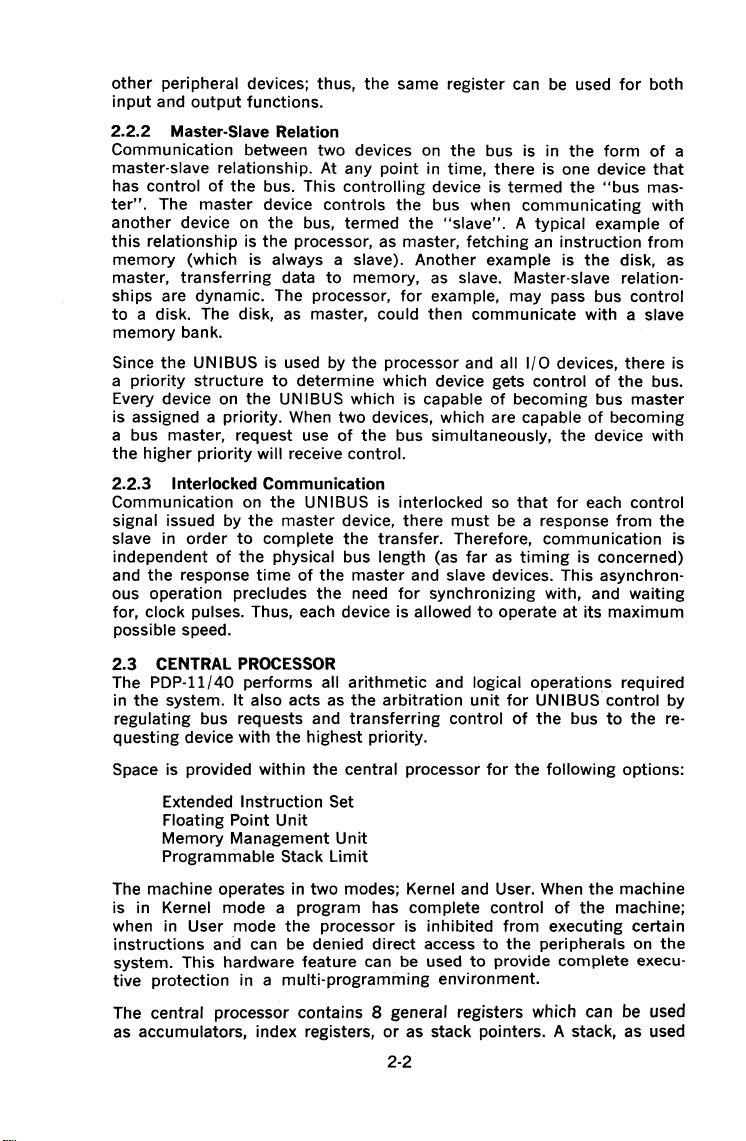
other
peripheral devices; thus, the same register can be used
for
both
input
and
output
functions.
2.2.2
Master-Slave Relation
Communication between
two
devices on
the
bus is in
the
form
of
a
master-slave relationship. At any point in time, there is one device
that
has control
of
the
bus. This controlling device is termed
the
"bus
mas·
ter".
The master device controls the bus when communicating
with
another device on
the
bus, termed
the
"slave".
A typical example
of
this
relationship is
the
processor, as master, fetching an instruction
from
memory
(which is always a slave). Another example is
the
disk, as
master,
transferring
data
to
memory, as slave. Master-slave relation·
ships are dynamic. The processor,
for
example, may pass bus control
to
a disk. The disk,
as
master, could then communicate
with
a slave
memory bank.
Since the UNIBUS is used by
the
processor and all 1/0 devices, there is
a
priority
structure
to
determine which device gets control
of
the
bus.
Every device on the
UNIBUS which is capable
of
becoming bus master
is
assigned a priority. When two devices, which are capable
of
becoming
a bus master, request use
of
the
bus simultaneously,
the
device with
the
higher
priority
will receive control.
2.2.3
Interlocked Communication
Communication on the
UNIBUS is interlocked so
that
for
each control
signal
issued by
the
master device, there
must
be
a response
from
the
slave in order
to
complete
the
transfer. Therefore, communication is
independent
of
the
physical bus length (as
far
as
timing
is concerned)
and the response
time
of
the master and slave devices. This asynchron·
ous operation
precludes
the
need
for
synchronizing with, and waiting
for,
clock pulses. Thus, each device is allowed
to
operate at its
maximum
possible speed.
2.3
CENTRAL
PROCESSOR
The
PDP·ll/40
performs all
arithmetic
and logical operations required
in
the
system.
It
also acts as
the
arbitration
unit
for
UNIBUS control by
regulating bus requests and transferring control
of
the
bus
to
the
re·
questing device with
the
highest priority.
Space is provided
within
the
central processor
for
the
following options:
Extended
Instruction Set
Floating
Point
Unit
Memory Management
Unit
Programmable Stack
Limit
The machine operates in
two
modes; Kernel and User. When
the
machine
is in
Kernel mode a program has complete control
of
the machine;
when in User mode
the
processor is inhibited
from
executing certain
instructions
and can
be
denied direct access
to
the peripherals on
the
system. This hardware feature can be used
to
provide complete execu·
tive protection in a multi-programming environment.
The
central processor contains 8 general registers which can be used
as
accumulators, index registers,
or
as stack pointers. A stack, as used
2·2













